Online Class: Basic Gardening and Plant Care

-
15Lessons
-
22Exams &
Assignments -
6Hours
average time -
0.6CEUs
Course Description
Imagine stepping into a world where your fingertips hold the power to coax life from the earth. Welcome to "Gardening: Cultivating Beauty and Sustenance," an enchanting journey that transforms the way you perceive and interact with nature. This isn't merely a course; it's an awakening to the profound impact you can cultivate every single day within the boundaries of your garden, however modest or expansive it may be.
In this course, your journey begins with the most fundamental element of gardening--understanding the dance between soil and plants. Picture yourself as a conductor, orchestrating the symphony of minerals, organic matter, and microorganisms. Learn how soil diversity--whether it's the free-draining sand or the rich containment of clay--affects each plant's ability to thrive. You will acquire the knowledge to modify and enhance your soil to create a nourishing foundation, setting your garden apart as a thriving ecosystem.
As your garden's architect, you'll delve into the meticulous art of seed selection and propagation, cultivating a spectrum of plant life that speaks to your personal taste and local ecology. You will gain insights on how to interpret seed packets like a seasoned botanist, distinguishing the resilient heirlooms from their hybrid counterparts. Imagine the pride of watching your garden flourish under your care, bringing an array of vibrant, resilient plants to life.
Water is to plants what breath is to life. Here, you'll master sustainable watering techniques, from straightforward methods to employing innovative technology. Envision your garden blossoming with health as you manage its watering needs with precision, conserving resources while ensuring every leaf and petal glistens with vitality. This knowledge empowers you to be not just a consumer, but a steward of the earth's most precious resource.
The dance of sunlight across your garden is yet another chapter in your journey. Imagine positioning each plant, understanding its sun-kissed needs, and transforming this knowledge into a canvas of living art. You'll learn the nuances of daylight variations and become adept at using both natural and technological advances to light your garden perfectly, maximizing its beauty and bounty.
But what's a garden without its celestial helpers--pollinators buzzing, fluttering, spreading life from flower to flower? Delve into the world of creating havens for them, ensuring your garden is a buzzing hub of activity all year round. With the guidance from this course, you'll develop the skills to nurture a balanced ecosystem that mirrors nature's elegance and resilience.
Let's not forget the intricate dance with garden pests, an inevitability for any gardener. Fear not, as we arm you with cutting-edge strategies to manage these challenges. Picture yourself as a vigilant guardian, using traditional wisdom coupled with modern technology like drones and infrared tech to protect your verdant abode against unwanted intrusions.
And for those with limited space, we unveil the secrets of container and vertical gardening. Discover the joy of transforming even the tiniest balcony into a thriving garden, and how vertical gardens can enhance both beauty and air quality in urban settings. The course ensures that no matter where you are, your connection to nature remains strong and fulfilling.
This course is more than just a series of lessons. It is a mentor, guiding you not just to grow plants, but to evolve with them. Each season will bring new lessons, challenges, and triumphs, reflecting the very cycles of life itself. Every module nudges you closer to becoming a confident curator of green spaces, transforming you into an ambassador of sustainability and earth stewardship.
Enroll in "Gardening: Cultivating Beauty and Sustenance" today, and unlock the gateway to a transformative journey that marries the science of horticulture with the art of personal enrichment. This is not a mere class--it's an invitation to redefine your existence in harmony with the natural world, fostering a lifelong bond with the soil beneath your feet and the sky above your garden. Join us, and watch your life bloom.
- Business
- Business Ethics Courses
- Harassment Prevention Courses
- Human Resources Certifications
- Management
- Aromatherapy Courses
- Caregiver Courses
- Career Development Courses
- Communications Courses
- Confidence and Self Esteem Courses
- Healing
- Human Anatomy Courses
- Medical Skills
- Health & Medicine
- Nutrition
- Marketing
- Microsoft Office Certification Courses
- Life Coaching Courses
- Self-Improvement
- Small Business Certifications
- Safety
- Writing Improvement
- Business Writing Courses
Course Lessons
Lesson 1. Soil Dynamics: Essential Guide for Successful Gardening
 Review Practice Worksheet: Lesson-1-Activity-20376.pdf
Review Practice Worksheet: Lesson-1-Activity-20376.pdf Lesson discussions: Reasons for Taking this Course
Lesson discussions: Reasons for Taking this Course Complete: Lesson 1 Activity
Complete: Lesson 1 Activity Assessment: Lesson 1 Review Exam
Assessment: Lesson 1 Review Exam
Lesson 2. From Sandy Shores to Clay Heartlands: Enhancing Soil for Plant Health
 Review Practice Worksheet: Lesson-2-StudyGuide-20379.pdf
Review Practice Worksheet: Lesson-2-StudyGuide-20379.pdf Assessment: Lesson 2 Review Exam
Assessment: Lesson 2 Review Exam
Lesson 3. Empowering Your Green Thumb with Essential Garden Tools
 Review Practice Worksheet: Lesson-3-WorkSheet-20381.pdf
Review Practice Worksheet: Lesson-3-WorkSheet-20381.pdf Complete: Lesson 3 Activity
Complete: Lesson 3 Activity Assessment: Lesson 3 Review Exam
Assessment: Lesson 3 Review Exam
Lesson 4. Seed Selection and Propagation: Cultivating Diversity
 Review Practice Worksheet: Lesson-4-StudyGuide-20383.pdf
Review Practice Worksheet: Lesson-4-StudyGuide-20383.pdf Complete: Lesson 4 Activity
Complete: Lesson 4 Activity Assessment: Lesson 4 Review Exam
Assessment: Lesson 4 Review Exam
Lesson 5. Mastering the Art of Watering for Sustainable Growth
 Review Practice Worksheet: Lesson-5-HomeWork-20386.pdf
Review Practice Worksheet: Lesson-5-HomeWork-20386.pdf Assessment: Lesson 5 Review Exam
Assessment: Lesson 5 Review Exam
Lesson 6. Harnessing Sunlight: Decoding Plant Needs for Thriving Gardens
 Review Practice Worksheet: Lesson-6-WorkSheet-20389.pdf
Review Practice Worksheet: Lesson-6-WorkSheet-20389.pdf Assessment: Lesson 6 Review Exam
Assessment: Lesson 6 Review Exam
Lesson 7. Revitalize Your Garden with Compost: Methods, Benefits, and Best Practices
 Review Practice Worksheet: Lesson-7-Activity-20392.pdf
Review Practice Worksheet: Lesson-7-Activity-20392.pdf Complete: Lesson 7 Activity
Complete: Lesson 7 Activity Assessment: Lesson 7 Review Exam
Assessment: Lesson 7 Review Exam
Lesson 8. The Battle of Bugs: Mastering Garden Pests
 Review Practice Worksheet: Lesson-8-StudyGuide-20394.pdf
Review Practice Worksheet: Lesson-8-StudyGuide-20394.pdf Assessment: Lesson 8 Review Exam
Assessment: Lesson 8 Review Exam
Lesson 9. Vital Garden Tools and Techniques: A Pruner's Guide
 Review Practice Worksheet: Lesson-9-HomeWork-20398.pdf
Review Practice Worksheet: Lesson-9-HomeWork-20398.pdf Complete: Lesson 9 Activity
Complete: Lesson 9 Activity Assessment: Lesson 9 Review Exam
Assessment: Lesson 9 Review Exam
Lesson 10. Gardening from the Ground Up: Understanding Seed Selection and Germination
 Review Practice Worksheet: Lesson-10-StudyGuide-20401.pdf
Review Practice Worksheet: Lesson-10-StudyGuide-20401.pdf Assessment: Lesson 10 Review Exam
Assessment: Lesson 10 Review Exam
Lesson 11. Vessels of Growth: Unveiling the Secrets of Container Gardening
 Review Practice Worksheet: Lesson-11-Downloadable-20403.pdf
Review Practice Worksheet: Lesson-11-Downloadable-20403.pdf Assessment: Lesson 11 Review Exam
Assessment: Lesson 11 Review Exam
Lesson 12. From Soil to Sky: Strategic Planning for Garden Success
 Review Practice Worksheet: Lesson-12-Downloadable-20405.pdf
Review Practice Worksheet: Lesson-12-Downloadable-20405.pdf Assessment: Lesson 12 Review Exam
Assessment: Lesson 12 Review Exam
Lesson 13. A Profound Connection with Nature: Lessons from Seasonal Gardening
 Review Practice Worksheet: Lesson-13-Activity-20407.pdf
Review Practice Worksheet: Lesson-13-Activity-20407.pdf Complete: Lesson 13 Activity
Complete: Lesson 13 Activity Assessment: Lesson 13 Review Exam
Assessment: Lesson 13 Review Exam
Lesson 14. Gardening Beyond Beauty: Nurturing Native Pollinators
 Review Practice Worksheet: Lesson-14-Downloadable-20408.pdf
Review Practice Worksheet: Lesson-14-Downloadable-20408.pdf Complete: Lesson 14 Activity
Complete: Lesson 14 Activity Assessment: Lesson 14 Review Exam
Assessment: Lesson 14 Review Exam
Lesson 15. Sustainable Indoor Gardening Practices
 Review Practice Worksheet: Lesson-15-StudyGuide-20411.pdf
Review Practice Worksheet: Lesson-15-StudyGuide-20411.pdf Lesson discussions: End of Course Poll; Course Comments
Lesson discussions: End of Course Poll; Course Comments Assessment: Lesson 15 Review Exam
Assessment: Lesson 15 Review Exam
Learning Outcomes
- Define the role of soil composition and structure in nutrient and water retention across varied plant systems.
- Identify appropriate soil pH levels for optimal nutrient uptake in different plant types and methods to adjust pH effectively.
- Demonstrate understanding of different soil types by describing their characteristics and impact on plant growth.
- Identify appropriate soil amendments to enhance plant health based on soil type and pH levels.
- Demonstrate the correct usage and care for power tools in gardening, ensuring personal safety and tool longevity.
- Identify and describe the function of at least three different gardening hand tools and their specific benefits to garden health.
- Demonstrate the process of transplanting seedlings effectively to enhance plant growth and resilience.
- Identify key factors for successful site selection and soil preparation in gardening.
- Define the critical factors affecting soil moisture and apply suitable strategies to manage irrigation for diverse plant species.
- Demonstrate the use of traditional and modern tools to accurately gauge soil moisture, optimizing watering techniques for plant health.
- Describe the process of photosynthesis and explain how sunlight intensity and duration affect plant growth and health.
- Identify different plant light requirements (full sun, partial shade, full shade) and demonstrate strategic plant placement to maximize garden productivity based on available sunlight.
- Demonstrate mastery of lesson content at levels of 70% or higher.
Additional Course Information

- Document Your Lifelong Learning Achievements
- Earn an Official Certificate Documenting Course Hours and CEUs
- Verify Your Certificate with a Unique Serial Number Online
- View and Share Your Certificate Online or Download/Print as PDF
- Display Your Certificate on Your Resume and Promote Your Achievements Using Social Media

Related Courses
-
 7 hours
0.7 CEUs
Building Patience and Tolerance
+ More Info
7 hours
0.7 CEUs
Building Patience and Tolerance
+ More Info
-
 6 hours
0.6 CEUs
Flawless Finish: Understanding Details in Luxury Fashion
+ More Info
6 hours
0.6 CEUs
Flawless Finish: Understanding Details in Luxury Fashion
+ More Info
-
 7 hours
0.7 CEUs
Effective Communication for the Workplace
+ More Info
7 hours
0.7 CEUs
Effective Communication for the Workplace
+ More Info
-
 7 hours
0.7 CEUs
Networking and Relationship Building
+ More Info
7 hours
0.7 CEUs
Networking and Relationship Building
+ More Info
-
 7 hours
0.7 CEUs
Authentic Connections: The Importance of Transparency in Relationships
+ More Info
7 hours
0.7 CEUs
Authentic Connections: The Importance of Transparency in Relationships
+ More Info
-
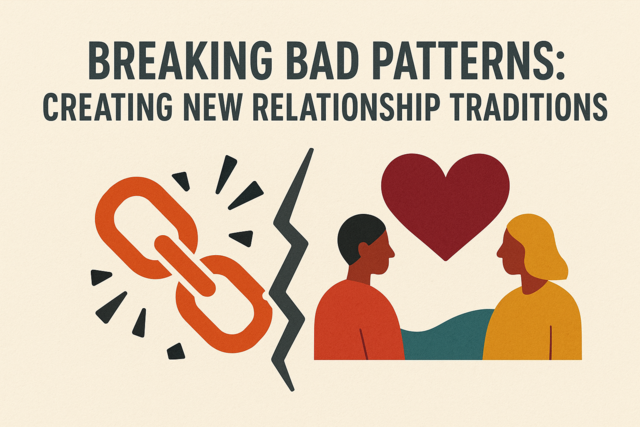 5 hours
0.5 CEUs
Breaking Bad Patterns: Creating New Relationship Traditions
+ More Info
5 hours
0.5 CEUs
Breaking Bad Patterns: Creating New Relationship Traditions
+ More Info
-
 4 hours
0.4 CEUs
Home Organization and Decluttering Techniques
+ More Info
4 hours
0.4 CEUs
Home Organization and Decluttering Techniques
+ More Info
-
 7 hours
0.7 CEUs
Mysteries of the Unexplained
+ More Info
7 hours
0.7 CEUs
Mysteries of the Unexplained
+ More Info
-
 7 hours
0.7 CEUs
Classroom Design and Environment for Special Needs Students
+ More Info
7 hours
0.7 CEUs
Classroom Design and Environment for Special Needs Students
+ More Info
-
 3 hours
0.3 CEUs
From Me to We: Transitioning to a Team Mindset
+ More Info
3 hours
0.3 CEUs
From Me to We: Transitioning to a Team Mindset
+ More Info
-
 4 hours
0.4 CEUs
Narratives of Love: Crafting Your Relationship Story
+ More Info
4 hours
0.4 CEUs
Narratives of Love: Crafting Your Relationship Story
+ More Info
-
 5 hours
0.5 CEUs
Cyber Safety for Families
+ More Info
5 hours
0.5 CEUs
Cyber Safety for Families
+ More Info
-
 3 hours
0.3 CEUs
Unseen Forces: Investigating Poltergeists and Apparitions
+ More Info
3 hours
0.3 CEUs
Unseen Forces: Investigating Poltergeists and Apparitions
+ More Info
-
 7 hours
0.7 CEUs
Negotiation and Persuasion in Business
+ More Info
7 hours
0.7 CEUs
Negotiation and Persuasion in Business
+ More Info
-
 6 hours
0.6 CEUs
Workplace Safety and Health Awareness
+ More Info
6 hours
0.6 CEUs
Workplace Safety and Health Awareness
+ More Info
-
 4 hours
0.4 CEUs
Creative Thinking and Innovation
+ More Info
4 hours
0.4 CEUs
Creative Thinking and Innovation
+ More Info
-
 4 hours
0.4 CEUs
Elite Ensembles: Crafting Timeless Women's Looks
+ More Info
4 hours
0.4 CEUs
Elite Ensembles: Crafting Timeless Women's Looks
+ More Info
-
 3 hours
0.3 CEUs
Career Planning and Development
+ More Info
3 hours
0.3 CEUs
Career Planning and Development
+ More Info
-
 7 hours
0.7 CEUs
Ethical Decision-Making for Educators
+ More Info
7 hours
0.7 CEUs
Ethical Decision-Making for Educators
+ More Info
-
 3 hours
0.3 CEUs
The Role of Paraprofessionals in Special Education
+ More Info
3 hours
0.3 CEUs
The Role of Paraprofessionals in Special Education
+ More Info
-
 7 hours
0.7 CEUs
The Renaissance of Relationship: Revitalizing Emotional Bonds
+ More Info
7 hours
0.7 CEUs
The Renaissance of Relationship: Revitalizing Emotional Bonds
+ More Info
-
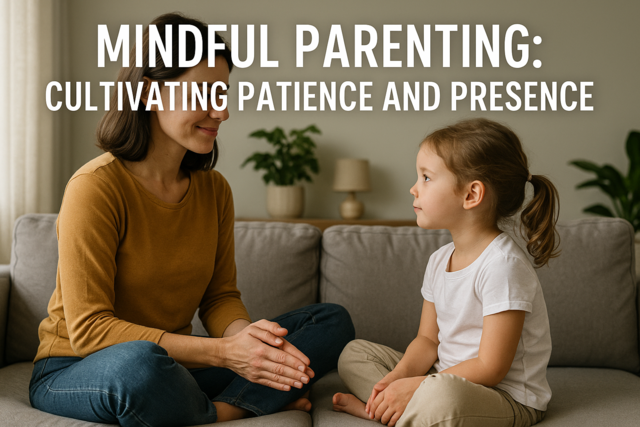 5 hours
0.5 CEUs
Mindful Parenting: Cultivating Patience and Presence
+ More Info
5 hours
0.5 CEUs
Mindful Parenting: Cultivating Patience and Presence
+ More Info
-
 3 hours
0.3 CEUs
Budgeting and Financial Planning
+ More Info
3 hours
0.3 CEUs
Budgeting and Financial Planning
+ More Info
-
 4 hours
0.4 CEUs
Assertiveness Training for Professionals
+ More Info
4 hours
0.4 CEUs
Assertiveness Training for Professionals
+ More Info
-
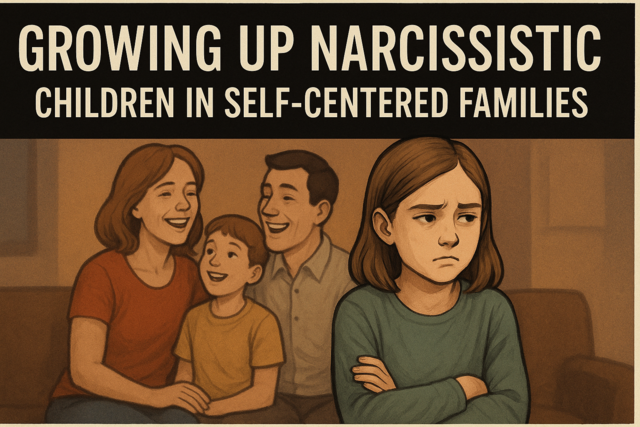 3 hours
0.3 CEUs
Growing Up Narcissistic: Children in Self-Centered Families
+ More Info
3 hours
0.3 CEUs
Growing Up Narcissistic: Children in Self-Centered Families
+ More Info
-
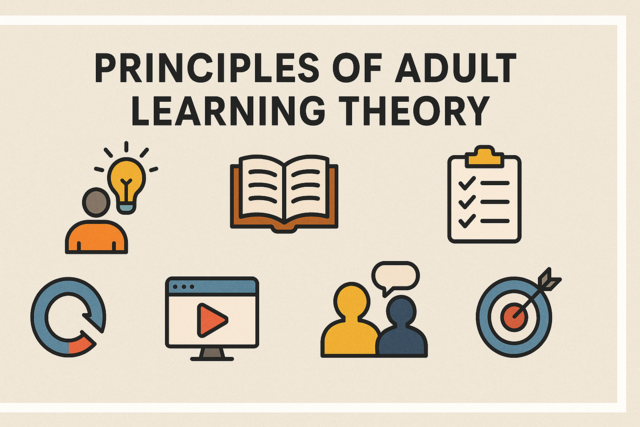 4 hours
0.4 CEUs
Principles of Adult Learning Theory
+ More Info
4 hours
0.4 CEUs
Principles of Adult Learning Theory
+ More Info
-
 4 hours
0.4 CEUs
Familial Fortitude: Strengthening Bonds from Within
+ More Info
4 hours
0.4 CEUs
Familial Fortitude: Strengthening Bonds from Within
+ More Info
-
 4 hours
0.4 CEUs
Innovative Curriculum Design for the 21st Century
+ More Info
4 hours
0.4 CEUs
Innovative Curriculum Design for the 21st Century
+ More Info
-
 5 hours
0.5 CEUs
Advanced Feng Shui Techniques
+ More Info
5 hours
0.5 CEUs
Advanced Feng Shui Techniques
+ More Info
-
 5 hours
0.5 CEUs
Building Emotional Safety Nets: A Guide for Couples
+ More Info
5 hours
0.5 CEUs
Building Emotional Safety Nets: A Guide for Couples
+ More Info
-
 7 hours
0.7 CEUs
Understanding Adolescent Development
+ More Info
7 hours
0.7 CEUs
Understanding Adolescent Development
+ More Info
-
 7 hours
0.7 CEUs
Mastering Time Management for Professionals
+ More Info
7 hours
0.7 CEUs
Mastering Time Management for Professionals
+ More Info
-
 5 hours
0.5 CEUs
Harnessing the Power of Feedback
+ More Info
5 hours
0.5 CEUs
Harnessing the Power of Feedback
+ More Info
-
 7 hours
0.7 CEUs
Legal Frameworks in Special Education: IDEA and Beyond
+ More Info
7 hours
0.7 CEUs
Legal Frameworks in Special Education: IDEA and Beyond
+ More Info
-
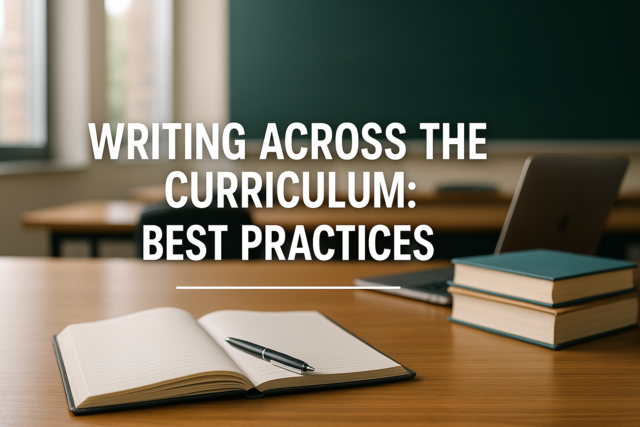 3 hours
0.3 CEUs
Writing Across the Curriculum: Best Practices
+ More Info
3 hours
0.3 CEUs
Writing Across the Curriculum: Best Practices
+ More Info
-
 4 hours
0.4 CEUs
Collaboration Skills for Special Education Teams
+ More Info
4 hours
0.4 CEUs
Collaboration Skills for Special Education Teams
+ More Info
-
 4 hours
0.4 CEUs
Gamification in Education
+ More Info
4 hours
0.4 CEUs
Gamification in Education
+ More Info
-
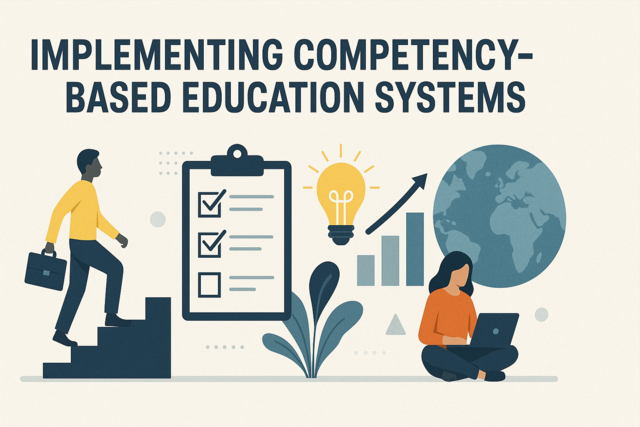 4 hours
0.4 CEUs
Implementing Competency-Based Education Systems
+ More Info
4 hours
0.4 CEUs
Implementing Competency-Based Education Systems
+ More Info
-
 3 hours
0.3 CEUs
Teaching Executive Function Skills to Special Needs Students
+ More Info
3 hours
0.3 CEUs
Teaching Executive Function Skills to Special Needs Students
+ More Info
-
 5 hours
0.5 CEUs
The Strangeness of Human Consciousness
+ More Info
5 hours
0.5 CEUs
The Strangeness of Human Consciousness
+ More Info




